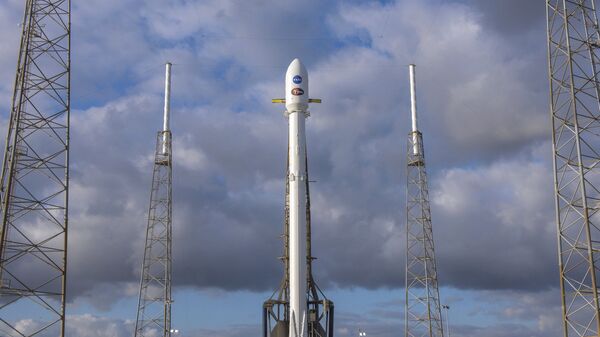Sputnik: How novel is this space telescope and how markedly different is it from the previous ones?
Natalia Guerrero: TESS is really exciting because it is taking one of a kind data set of surveying nearly the entire sky. Now, while Kepler was able to look at very distant, very faint stars and detect exoplanets around them, TESS will be looking at the nearest and brightest stars to us and this will be really useful for follow up by telescopes on the ground and in space, hopefully, like the James Webb telescope in a few years.
READ MORE: Stargazers Spot Aliens on Chinese Probe's Photos (VIDEO)
Sputnik: What is the underlining ambition and strategy of the projects? What prospects does the launch of TESS open up for astronomy and space exploration in general now?
Natalia Guerrero: TESS is going to look for a whole range of exoplanets, everything from the small, rocky planets to giant planets, and we already know thanks to Kepler that there are all sorts of really interesting planets out there, water worlds, planets just covered in lava, planets where it rains rubies, so we hope to find planets like this with TESS, but also planets that help us answer this question: Is our Earth, our solar system, common or unique?
Sputnik: What could be the practical application of the obtained knowledge gained by this?
Natalia Guerrero: We would probably be able to better understand how our solar system came to be by understanding, with follow up observation, the exoplanets and with telescopes like Kepler the atmospheres of these planets; so to better understand our planet, our atmosphere and the solar system.
READ MORE: Aliens Again? Mysterious Object in Brazil Skies Baffles Users (VIDEO)
Sputnik: How will the planet detection process look like specifically?
Natalia Guerrero: When TESS comes around in its orbit the data is sent down to Earth and comes to MIT and from there it goes to NASA in California where it's processed, and then when he comes back to MIT we're actually going to be, for the first several months of the mission, looking by hand through the data trying to find these transits. Now transits are what we call a planet when it's orbiting the host star in our line of sight crosses in front of a star and blocks a small amount of its starlight and creates a dip in that starlight, which for the most part is relatively stable, and so we're looking for transits that look like exoplanets, or for other astronomers something interesting like two stars going around each, what we call eclipsing binaries, or other phenomenons, but primarily exoplanets; so we're going to be sifting through the data by hand at first and then working more towards automation to be finding these really interesting exoplanets for teams around the world to start following up.
READ MORE: Don't Hide It! Google Reportedly Edits Scottish Loch Ness Monster Pics
Sputnik: What's your best expectations regarding the specific project because it's a very exciting one? What can you share with us in terms of what you're hoping for?
Natalia Guerrero: I'm really excited to see, as I've said before, the diversity of the exoplanets, as well as add to the catalogue of the known exoplanets thousands more, and I think it will be very exciting for us because some of the bright stars that TESS looks for are actually visible by naked eye here from Earth. So in a few years when Tess completes its mission we will be able to go outside and look at these stars and know that they have exoplanets.
Sputnik: Can you explain to us what the next steps are going to be in terms of this project? What's in your working diary in the next week or two regarding these projects?
Natalia Guerrero: So TESS for the next several weeks has a few more burns before it gets into its final orbit, so this week and then the coming weeks, we're going to be turning the cameras on for the first time and starting to understand how this satellite performs in space.
The views of the speaker do not necessarily reflect those of Sputnik.



